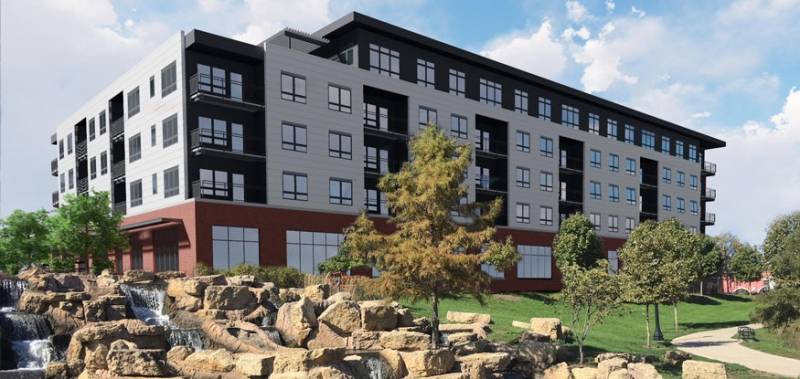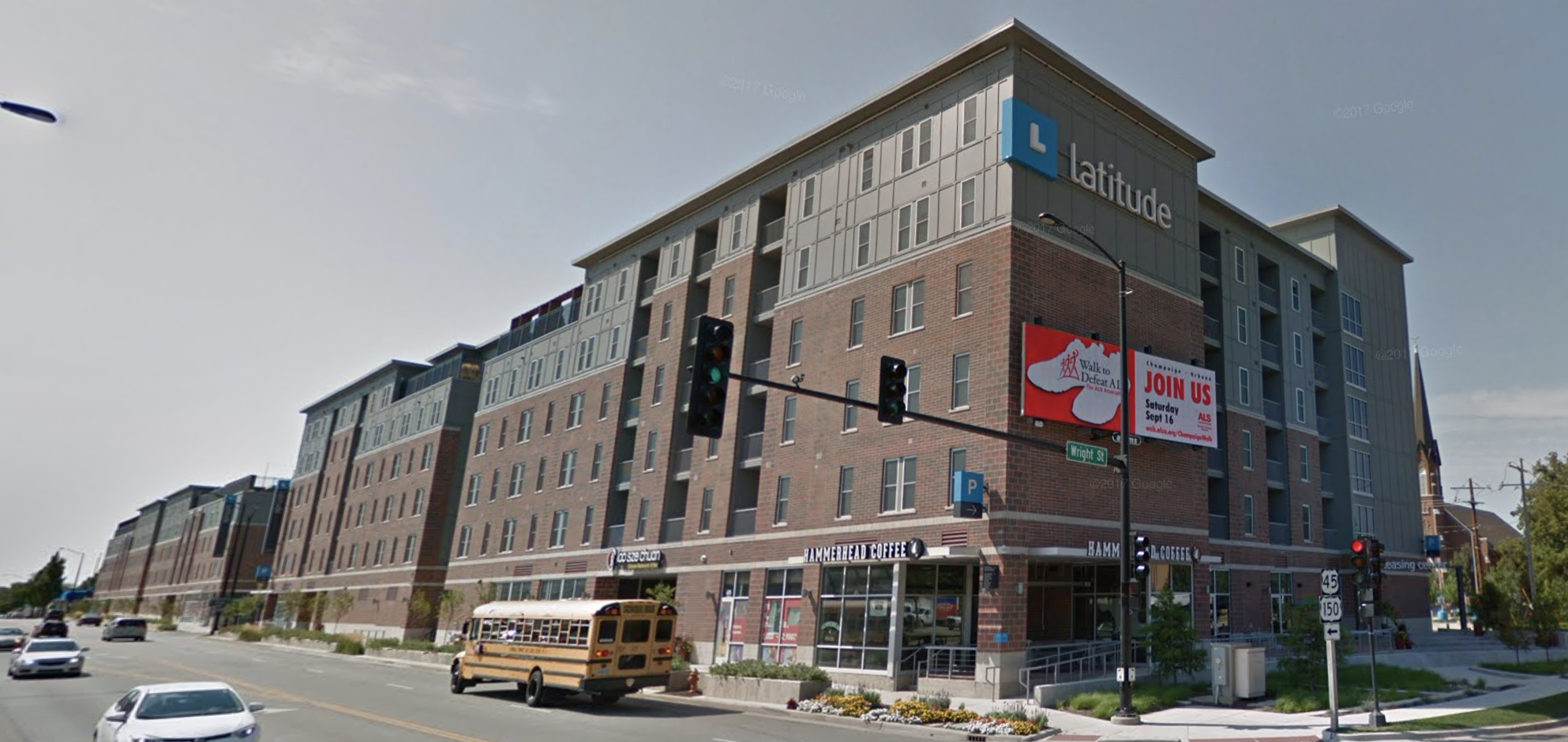Latitude is one of the newest luxury apartments to move north of University (Image: Google Streetview)
Gentrification, a phenomenon where longtime residents are displaced by wealthier and oftentimes whiter newcomers, is usually a term reserved for neighborhoods in larger cities like Chicago, Boston, or San Francisco. As more and more wealthy professionals seek a vibrant urban experience, established, historic, centrally-located, bohemian and/or culturally rich neighborhoods become ever more attractive and in-demand, like the Latin American community of Pilsen in Chicago or the artist spaces of Williamsburg in Brooklyn. The influx of newcomers leads to increasing rents that many long-time residents may struggle to afford, the closing of neighborhood businesses, the loss of the character of a neighborhood, and an uptick in coffee shops and trendy bars. With a wealthier tax base, it is easier for municipalities to fund improvements in the neighborhood such as better streets, new parks, or public art pieces, which consequently increases the demand for the area and continues a cycle of increasing cost of living.
So what does this have to do with Champaign-Urbana? Gentrification is not a strictly “metropolitan” term — small cities like Galena or Traverse City definitely have some characteristics of gentrification that have come into play as Midwestern urbanites seek charming small towns for second homes, Airbnb rentals, or full-blown relocation. But even so, it is hard to draw parallels between these sought-after, bucolic Midwestern towns and the micropolitan Champaign-Urbana area. Perhaps traditional gentrification is less present than a slightly more specific phenomenon: studentification.
Studentification is exactly what it sounds like, wherein the presence of students in otherwise traditional neighborhoods increases. Though the student population is uniquely at the University of Illinois, largely in the Campustown area, students often live in apartments or homes far from the university or in traditional non-student neighborhoods and this can lead to some “town-gown” tensions. Aside from issues with late night parties and noises, student rental houses can pile large amounts of people into houses built for single-families, which can create parking issues, overload traditional garbage can and sanitation services, and a marginally higher sense of transiency. Despite these differences that separate town-gown neighborhoods from student or non-student neighborhoods, the relationship between students and non-students in West Urbana remains rather harmonious compared to other college towns.
However, the fringes of the campus seem to be a hotbed of development activity and possible future point of contention as new, student-oriented housing continues to swallow up blocks of traditional housing. New developments like Latitude at Wright and University (shown in top photo) have introduced hundreds of luxury student apartments to a historically underserved, working-class area and this pattern is likely to continue until the student rental market cools off. Unlike West Urbana, which saw the gradual intermingling of students into existing single-family homes, areas north of University Avenue and around the Second Street Basin are experiencing an entirely different change of demographics and neighborhood character. These neighborhoods are now seeing a surge in student apartment construction due to relatively affordable land (when compared to central Campustown locations) and prevalence of transit and pedestrian connections to campus.
 Midtown Plaza is one of Champaign’s first examples of a true “town-gown” development (image: Apartments.com)
Midtown Plaza is one of Champaign’s first examples of a true “town-gown” development (image: Apartments.com)
Though new Campustown construction like the Omni Development behind 309 Green and the Octave on the former Marquette School site have continued to introduce more residences and options for Illinois students, what is considered to be “campus” is continually expanding. The newly-formed Carle Illinois College of Medicine is sure to further blur these lines as more students enter the college and seek housing near the hospital. While new construction has brought improved streetscape conditions and lower rents for University students, non-students who do not own property on Campustown’s peripheries may see an increase in living costs as their location becomes more in-demand. While the situation here may not be extremely dire, other college towns like San Marcos, Texas (home of Texas State University) have seen town-gown relations reach a boiling point as a result of private development companies who cater to students seeking homes in the wake of the institution’s aggressive expansion. Luckily, we are not at that point, but a balance must be struck between the community and the institution; provisions for affordable housing along the campus periphery, within the development, or the creation of infrastructure like bus corridors or bike routes (much like the MCORE project) to guide new student-oriented developments may reduce conflict between the town and gown by ensuring “campus” will not consume, but benefit, the neighborhoods that make Champaign-Urbana unique.
As C-U deals with an influx of investment in certain areas and a lack of investment in other key areas, transportation may be the key to forging a path forward that reconciles the expansion of UI and the character of the area’s residents. The MCORE project has significantly improved the viability and speed of alternative transportation between downtown Champaign and Urbana and it could eventually make the underutilized Midtown and Lincoln Square areas more viable locations for student apartments, thus revitalizing the core of both cities and delivering a breath of life into areas which are seeking to attract business as well as introducing residents to keep the area lively outside of the 9-5 working hours. Bus travel times from Lincoln Square to the Illini Union from Lincoln Square are already comparable to many of Campustown’s farthest-flung apartments, so why not? Campustown has become a behemoth, so why not create a community elsewhere? In these locations, inter-mingling of the town and gown is possible, Midtown Plaza in Champaign, for example has a wide range of tenants, from undergrads to senior citizens. The University will expand regardless but it is important that neighborhoods remain for everyone, either on a four-year path or lifelong journey in Champaign-Urbana.
Top image from Google Streetview








